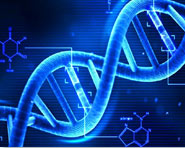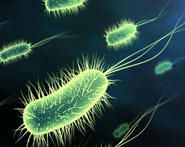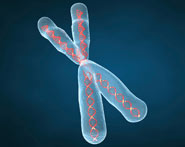


 النبات
النبات
 الحيوان
الحيوان
 الأحياء المجهرية
الأحياء المجهرية
 علم الأمراض
علم الأمراض
 التقانة الإحيائية
التقانة الإحيائية
 التقنية الحيوية المكروبية
التقنية الحيوية المكروبية
 التقنية الحياتية النانوية
التقنية الحياتية النانوية
 علم الأجنة
علم الأجنة
 الأحياء الجزيئي
الأحياء الجزيئي
 علم وظائف الأعضاء
علم وظائف الأعضاء
 الغدد
الغدد
 المضادات الحيوية
المضادات الحيوية|
أقرأ أيضاً
التاريخ: 4-8-2019
التاريخ: 7-3-2016
التاريخ: 6-3-2016
التاريخ: 11-9-2016
|
Pseudomonas is a ubiquitous microorganism that can rapidly acquire resistance to different broad-spectrum antibiotics. Multidrug resistant (MDR) Pseudomonas is an emerging cause of mortality and morbidity in burn patients, which causes 4-60% nosocomial infections in different parts of the world (Biswal et al., 2014). The MDR Pseudomonas elaborates inactivating enzymes that make beta-lactams and carbapenems ineffective, such as extended spectrum beta lactamases (ESBLs) and metallo-β-lactamases (MBLs) (Magiorakos et al., 2011; Dïken and Aksöz, 2016). Over the last decades, various definitions of MDR P. aeruginosa profiles have been used, it was defined as a bacterium which is resistant to anti-microbial agents which are included in three or more anti-Pseudomonal anti-microbial classes (carbapenems, fluoroquinolones, penicillins /cephalosporins and aminoglycosides) (Bibhabati, 2001).
World Health Organization has recently listed carbapenem- resistant P. aeruginosa as one of three bacterial species in which there is a critical need for the development of new antibiotics to treat infections (Navendu, 2006; Lister et al., 2009; Hirsch and Tam, 2010 ; Tacconelli et al., 2017). The development of different resistance mechanisms has a considerable clinical impact (Kollef, 2013) since compromises the efficacy of nearly all drugs used as a treatment against P. aeruginosa. This increased mortality and length of hospitalization (Magiorakos et al., 2012; Gonzalez et al., 2013). The major mechanisms of P. aeruginosa used to counter antibiotic attack can be classified into intrinsic, acquired and adaptive resistance (Breidenstein et al., 2011):
•The intrinsic resistance of P.aeruginosa includes low outer membrane permeability, expression of efflux pumps that expel antibiotics out of the cell and the production of antibiotic-inactivating enzymes.
•The acquired resistance of P. aeruginosa can be achieved by either horizontal transfer of resistance genes or mutational changes.
•The adaptive resistance of P. aeruginosa involves formation of biofilm in the lungs of infected patients where the biofilm serves as a diffusion barrier to limit antibiotic access to the bacterial cells (Drenkard, 2003). In addition, multidrug-tolerant persisted cells that are able to survive antibiotic attack can form in the biofilm; these cells are responsible for prolonged and recurrent infections in CF patients (Mulcahy et al., 2010).
References
-------------



|
|
|
|
هل تعرف كيف يؤثر الطقس على ضغط إطارات سيارتك؟ إليك الإجابة
|
|
|
|
|
|
|
الشبكات الإعلامية والقنوات الفضائية تسهم بشكل فاعل في نقل مراسم الزيارة الرجبية
|
|
|